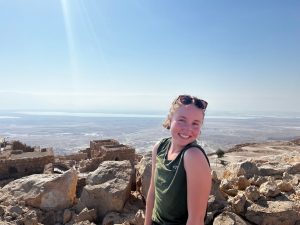
A Day in the Life on an Archaeological Survey Project
This summer, I was the recipient of the Shirlee Meyers-G. Ernest Wright Scholarship for Fieldwork Participation. This scholarship made it possible for me to participate in an archaeological survey project called “A Multi-Survey Exploration of Residences near Tell el-Hesi, Israel.” The project utilized GPR, magnetometry, and pedestrian survey to better understand where people were living in the Bronze Age town surrounding Tell el-Hesi; our results will help inform the locations of our excavations next season. I primarily helped with the pedestrian survey. In the area surrounding the tell, we created a grid of five-by-five meter squares in order to systematically measure the densities of potsherds, lithics, and other artifacts. We had five minutes in each square to pick up as many artifacts as we could. Our findings were then recorded and photographed before being placed back in the square. Over the course of three weeks, we surveyed 600 squares.
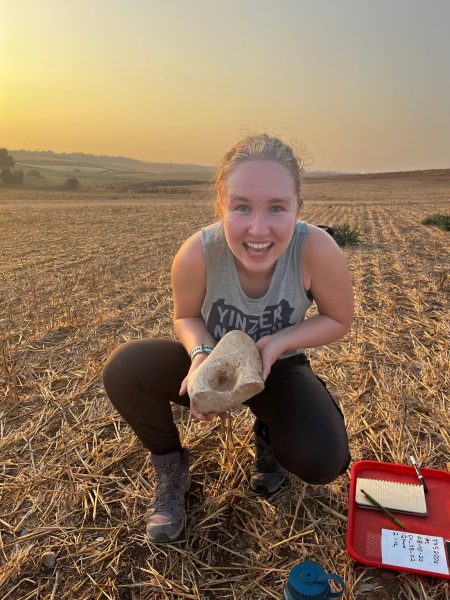
Upon arriving in Israel, we quickly fell into a routine. We stayed at a kibbutz, which is sort of like a gated community complete with a grocery store and a school. We woke up at 5:30 every morning as it was essential to get an early start to the day in order to beat the heat. For breakfast, I would usually have a pita and an apple with a mug of instant coffee. Then we piled into our trusty rental car we endearingly named Sandy—by the end of the project, the rear window was covered with dust. It was about a twenty minute drive from the kibbutz to the site on dirt roads; everyday, it seemed that we discovered new craters and bumps in the winding path.
At the site, we started our survey. The three of us undergraduates took our positions in our own squares, which were marked by pink tape, while our supervisor timed us and documented our findings. For five minutes, we picked up potsherds, lithics, and other miscellaneous objects—glass, bone, coral. Sometimes I collected upwards of thirty sherds in a square, while other times I was lucky to find three. After each five-minute interval, in addition to showing our supervisor, we also recorded in our own notebooks the proportion of Bronze Age pottery and noted any other unusual finds, such as sickle blade fragments.
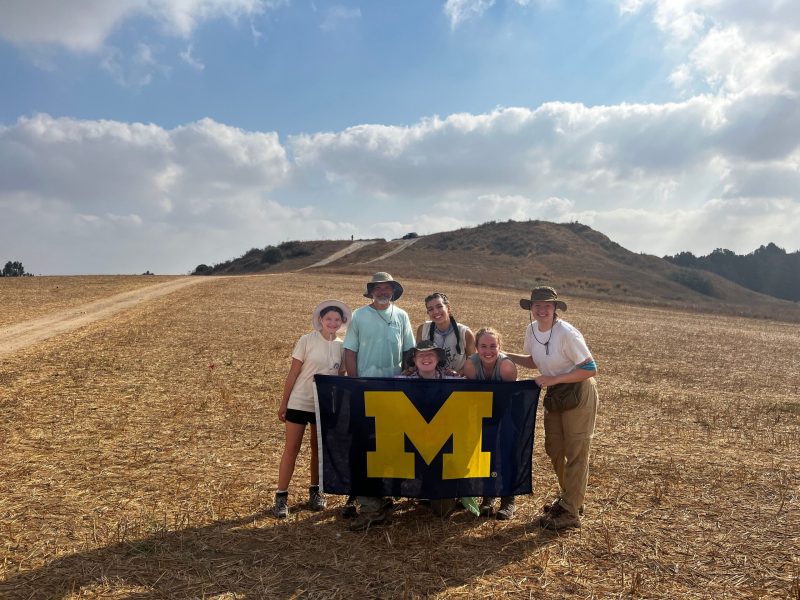
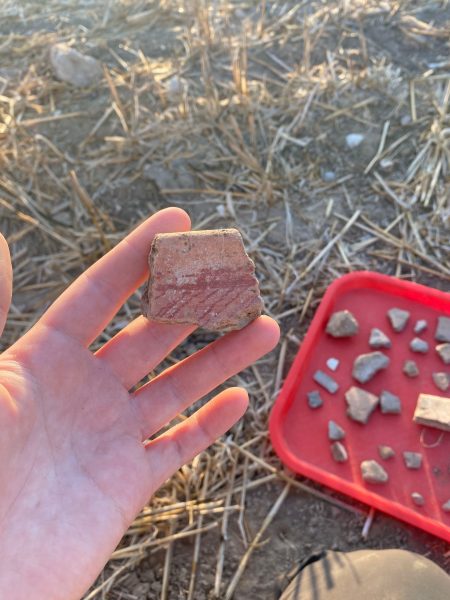
For the first hour or so, the tell blocked the sun from directly shining on us, so the air was almost cool. Gradually, it started to heat up, and eventually the black flies made their appearance. We kept surveying, swapping stories and playing music to distract ourselves from the heat and the perpetual buzzing of flies in our ears. It was sometimes difficult to stay motivated in the heat, but it helped me to look forward to the next milestone—200 squares, 300 squares, 400 squares—and to remember how much progress we had already made.
Around 9 am, we took a break in the comfort of our air conditioned car to have a snack and reapply sunscreen. Then we continued for another three hours, or until we hit our quota of squares for the day. Our work day was finished by lunchtime, at which point the heat was almost unbearable. We always felt accomplished with our work as we drove back to the kibbutz.
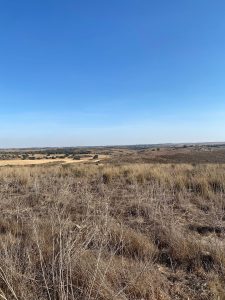
The landscape around Tell el-Hesi.
For lunch, we usually had pita bread and a variety of vegetables—cucumber, carrots, bell peppers—dipped in hummus. We made almost daily trips to the kibbutz grocery store for fruit; the peaches were the best I’ve ever had. In the afternoons, I helped organize boxes of artifacts from previous excavations at the site. Tell el-Hesi has been periodically excavated since the 19th century, though the boxes we were working with were from the 1970s and later. Some of the boxes were falling apart, so we moved the bags of artifacts to new ones; sometimes, the plastic bags were deteriorating as well. This task made me realize the importance of curation; it’s critical that we preserve artifacts for future generations.
After boxing artifacts and hanging out around the kibbutz in the afternoon, one of our favorite spots to go for dinner was McDonald’s, funny enough. McDonald’s in Israel is very different from the US as it’s not really considered fast food. Our first time there, I ordered a hamburger and was shocked to discover that it was almost the size of my face. I really enjoyed our time outside the kibbutz, both at night and on the weekends, when we took trips to places like Masada, the Dead Sea, and Jerusalem. I loved experiencing the culture of Israel as I learned firsthand about its archaeology.
I look forward to continuing this project next summer, when we begin excavations. I’m sure it will be very exciting and rewarding to participate in an archaeological field project from the initial survey phase all the way through the excavation. Of course, I wouldn’t have been able to participate in this project without the help of the Shirlee Meyers-G. Ernest Wright Scholarship, and I am sincerely grateful for this experience.
Anna Luurtsema is a senior at the University of Michigan studying anthropological archaeology with a minor in Middle East Studies. Her research interests include zooarchaeology, human mobility, and the origin of agriculture, and she plans to apply to graduate school this fall.
American Society of Overseas Research
The James F. Strange Center
209 Commerce Street
Alexandria, VA 22314
E-mail: info@asor.org
© 2023 ASOR
All rights reserved.
Images licensed under a Creative Commons Attribution-NonCommercial-ShareAlike 4.0 International License
COVID-19 Update: Please consider making payments or gifts on our secure Online Portal. Please e-mail info@asor.org if you have questions or need help.
